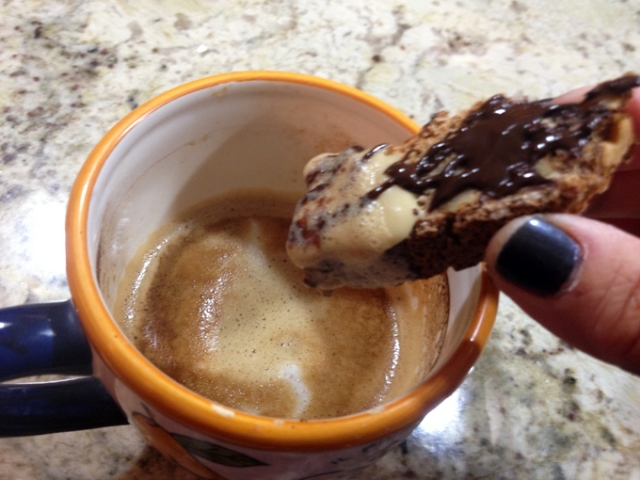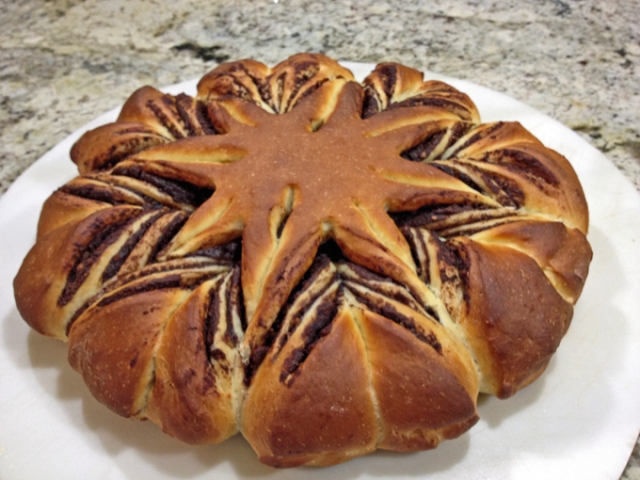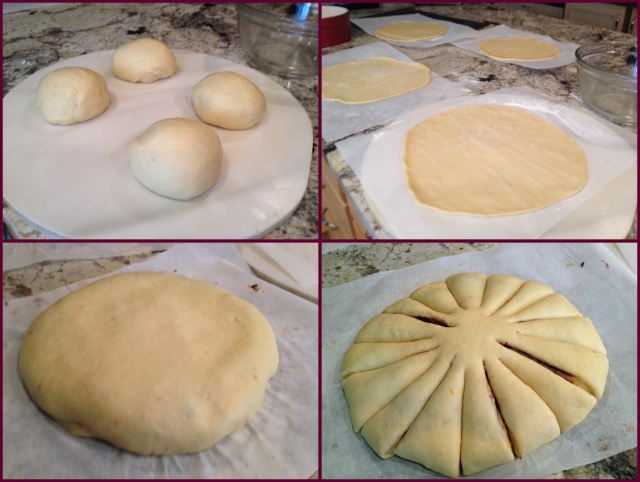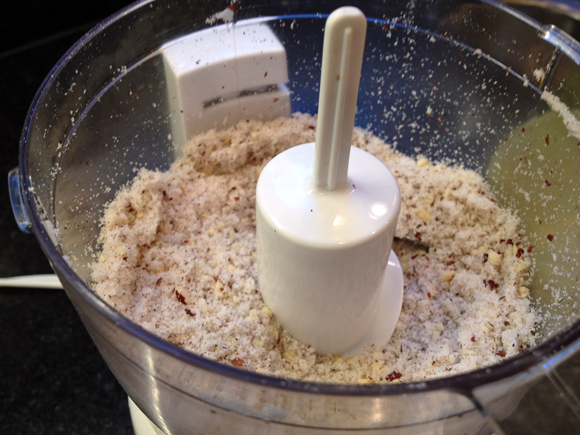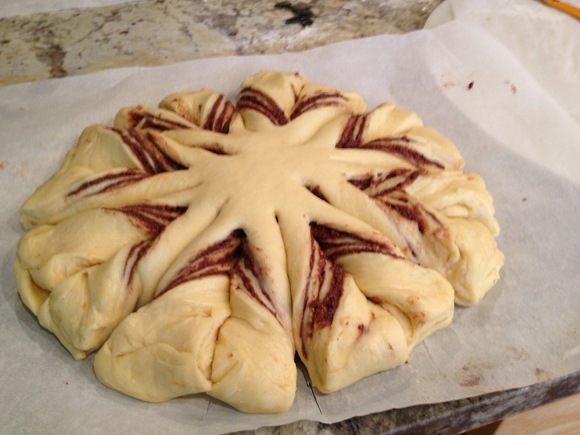One year ago, filming of Season 5 of The Great American Baking Show was coming to an end. In fact it was probably right this very day a year ago that Dana, Marissa and Brother Andrew faced their last baking challenges in that dreamy tent. Amazing that with this assignment we went full circle, and all the bakers who participate in “the collective”, proposed challenges on a monthly basis. It makes my heart sing. Dana chose a very cool project for the month of August. Recreate your favorite childhood treat. I had to give it some thought, but then my friend Denise (who grew up in Rio) reminded me of something called Nhá Benta. No need to panic, I will explain to you exactly how to say it (after the comments). Nhá Benta is a kind of sweet that is found in many countries under names like Marshmallow Puff, Tunnock’s Tea Cakes, Mallomars. The Brazilian version had a very thin base and a ton (I mean a real huge amount) of marshmallow on top. It was very messy to eat, which was a bit of a turn-off for me. Both my late Dad and I, we shared a little quirk: intense dislike of sugary mess. Even as a child, you would never see me with ice cream melting down my arm or lips. The very idea would leave me paralyzed. But it was so tasty, I could never resist it for very long. My re-make of this Brazilian classic is “user-friendly” and “Dad-approved.” A bigger, sturdier cookie base, and just the right amount of marshmallow to allow you to bite into it and not lose your dignity. To make it even more Brazilian, a green-and-yellow decoration, because sprinkles make my world go around.
NHÁ BENTA
(from the Bewitching Kitchen)
for the cookie base:
100g flour
25g whole wheat flour
25g hazelnut flour (or hazelnuts, finely ground)
50g brown sugar
½ tsp salt
113g unsalted butter (½ cup) cold, cubed
2 tbsp milk
1 tsp vanilla
for the marshmallow (makes more than you’ll need):
200 g sugar
¼ cup water
5 sheets gelatin
2 egg whites
¼ fine salt
For the chocolate coating:
250g chocolate couverture, tempered
1 tsp coconut oil, melted
drizzle: white chocolate, melted and dyed with oil-soluble food dye
sprinkles
Heat oven to 350F.
In a food processor, pulse together the flours, sugar and salt. Add the butter and pulse until mixture resembles coarse crumbs. Add the milk and vanilla and pulse until dough holds together when squeezed. Turn the dough out onto the counter and knead gently to bring together. Dust the counter with flour and roll the dough to ¼-inch thickness. Cut into rounds and place on a parchment-lined baking sheet. Freeze for 10 minutes. Bake until firm and beginning to brown on the edges, 12 to 15 minutes. Cool for 2 minutes on baking sheet, then transfer to a wire cooling rack to cool completely.
Make the marshmallows only when the cookies are ready and cool, because it sets reasonably quickly. Soak the gelatin sheets in cold water. Add the sugar and water in a small saucepan and bring to a boil over medium-high heat. Start whipping the egg whites so that they are at soft peaks within 5 minutes or so. Reduce the heat in the saucepan to medium and boil until mixture reaches 235-240F. Remove from heat and allow bubbling to subside.
With the mixer running on medium-high, gradually stream in the sugar syrup and drained gelatin sheets along the side of the mixing bowl into the egg whites. Continue to beat until glossy, thick and cooled to room temperature, about 6 to 8 minutes. Add the salt and mix for 1 minute.
Spoon the mixture into a piping bag fitted with a medium round piping tip and pipe over the cookies to form a dome. If dome needs smoothing, moisten fingers with water and gently smooth dome. Set aside to cool.
Temper the chocolate and add the coconut oil, mixing gently to incorporate. Immediately dip the cookies, marshmallow side down, into the chocolate. Flip to coat the bottom and place them gently over Silpat or parchment paper (do not place over a grid like a drying rack because that will mess up the coating at the bottom). Melt white chocolate and dye yellow. Place in a small piping bag, cut a very thin opening, and drizzle the surface of the covered cookies. Add sprinkles right away. Cool and serve, they can be stored in the fridge.
ENJOY!
to print the recipe, click here
Comments: First of all, if you want to make a version closer to the authentic one sold in Brazil by Kopenhagen, roll the cookie very thin, and pile that marshmallow as if you are trying to reach the ceiling. Good luck coating it all with tempered chocolate… but I bet it can be done. This was messy enough for me, I tell you. The drizzles are optional and are never found in the commercially available Nhá Bentas.

So what about its name? It would be best translated as Ms Benta. Nhá is a contraction of the word sinhá, a term commonly used in rural areas of the country decades ago. Basically, they are both variations of the formal “Senhora” still used today as a respectful way to refer to an older woman. For instance, my friends addressed my Mom as “Senhora Salete”, and my Dad as “Senhor Danillo.” The pronunciation of the word can be tricky for foreigners, so here we go, repeat after me…
This was my first time making Nha’ Bentas and I had no idea 2 egg whites would produce such a big volume of marsmallow. If your mixer handles 1 egg white, consider halving the recipe that part of the recipe. I also had quite a bit leftover tempered chocolate, and saved it for future adventures…
Follow your heart…
Dana, this was such a clever challenge, I am looking forward to the flash-back into childhood of our tent-baking friends. I invite my readers to stop by the Home Bakers Collective to read all about it.
ONE YEAR AGO: The Best, The Very Best Hummus
TWO YEARS AGO: Chicken Katsu
THREE YEARS AGO: Whole-Lemon Marinade: Long Overdue
FOUR YEARS AGO: Tomato and Cucumber Salad with Almond Vinaigrette
FIVE YEARS AGO: Eggplant Tomato Stacks
SIX YEARS AGO: The Couscous that Wasn’t
SEVEN YEARS AGO: Apple-Cinnamon Bread
EIGHT YEARS AGO: Blueberry Galette
NINE YEARS AGO: In My Kitchen, August 2011
TEN YEARS AGO: Journey to a New Home
ELEVEN YEARS AGO: Friday Night Dinner

































